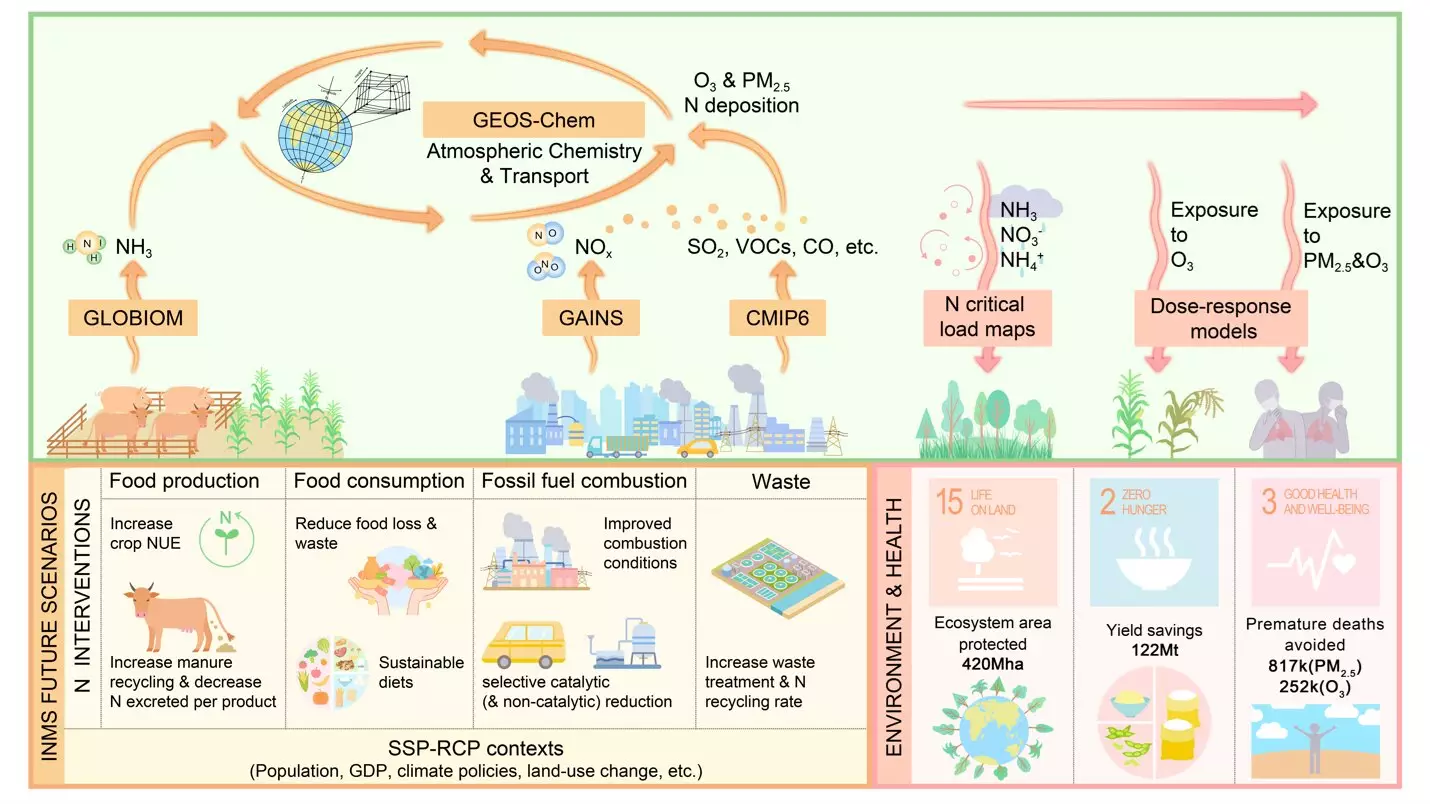The Earth’s nitrogen cycle is an essential ecological process, supporting various biological functions and agricultural systems. However, recent assessments indicate that humanity has significantly pushed this cycle beyond its natural limits—a phenomenon that is part of a broader environmental crisis marked by exceeding planetary boundaries. Practices such as intensive agriculture and the combustion of fossil fuels release a plethora of nitrogen pollutants into the environment. Among these pollutants are ammonia (NH3), nitrogen oxides (NOx), and nitrous oxide (N2O), which contribute to air quality degradation and the deterioration of ecosystems worldwide.
The implications of such pollution are significant. Not only does it pose direct risks to human health—causing respiratory and cardiovascular diseases—but it also undermines food security by adversely affecting crop yield and quality. This detrimental cycle is anticipated to escalate as global demands for food and energy continue to rise, highlighting an urgent need for effective mitigation strategies.
Despite the urgency of the issue, current research on nitrogen pollution often falls short in comprehensively addressing the problem. There exists a schism between traditional nitrogen budget studies which quantify nitrogen flows across various environmental mediums and Earth science research that models biogeochemical transformations, usually in isolation. This oversight hampers the development of effective policies aimed at managing nitrogen levels across systems.
To confront this challenge, an international team of researchers has undertaken a multidisciplinary approach. Their study introduces a new integrated framework that melds various scientific inquiries to investigate how strategic interventions in nitrogen management could alleviate air pollution and mitigate ecosystem damage. By combining integrated assessment models with air quality models, along with dose-response analysis, they could establish a more thorough and geographically specific understanding of potential outcomes.
Published in Science Advances, the team’s research suggests multiple nitrogen interventions that could not only reduce harmful emissions but also yield considerable public health benefits. Among the interventions highlighted are enhancing fuel combustion processes, improving nitrogen use efficiency in agriculture, and minimizing food waste. The data produced indicates that by 2050, ambitious nitrogen management could lead to a remarkable decrease in global emissions of ammonia and nitrogen oxides—projected reductions of 40% and 52% respectively compared to 2015 levels. These interventions hold the potential to prevent approximately 817,000 premature deaths and dramatic reductions in ground-level ozone concentrations, which are critical for healthier ecosystems and agricultural productivity.
Interestingly, without these proactive measures, the study warns that the environmental ramifications will intensify, particularly impacting regions like Africa and Asia. Conversely, if implemented correctly, these nitrogen interventions could significantly benefit these areas, which stand to gain the most from improved management strategies.
The significance of these findings extends beyond immediate environmental benefits and intersects with several UN Sustainable Development Goals (SDGs). The research indicates that improved nitrogen management can contribute substantially to goals such as Good Health and Well-being (SDG3), Zero Hunger (SDG2), Responsible Consumption and Production (SDG12), and Life on Land (SDG15). These overlaps underscore how an integrated approach to tackling nitrogen pollution is not just a singular environmental concern, but a multifaceted solution that addresses broader societal challenges.
As the world grapples with the realities of a growing population and increasing environmental stressors, the imperative for innovative policy design becomes clearer. As highlighted by researchers, tailored solutions that reflect regional circumstances are essential for effectively combating nitrogen pollution. Additionally, understanding the intertemporality of nitrogen interventions is crucial; benefits will accumulate over time, particularly visible by 2050.
Ultimately, this research serves as a clarion call for global action to address nitrogen pollution through comprehensive interventions. The multifaceted nature of nitrogen management presents an opportunity for countries to collaborate, drawing on diverse research and policy frameworks. This cooperative spirit will be essential as governments, scientists, and stakeholders work toward sustainable futures characterized by improved air quality, resilient ecosystems, and robust agricultural systems. The future of our planet’s health hinges on immediate and decisive action to restore balance to the nitrogen cycle, ensuring a healthier world for generations to come.


Leave a Reply